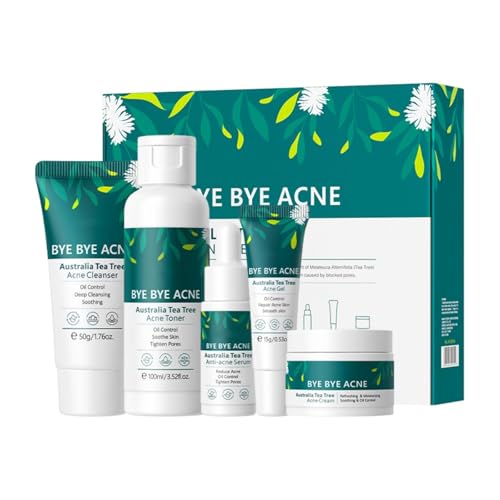We’ve all been there – staring at our reflection while battling stubborn breakouts that seem to appear at the worst possible moments. If you’re dealing with acne-prone skin, you know how frustrating it can be to find the right skincare routine that actually works without making things worse.
The truth is, caring for acne-prone skin isn’t about using the harshest products or following the most complicated routines. It’s about understanding your skin’s unique needs and creating a consistent approach that addresses breakouts while maintaining your skin’s natural balance.
We’re here to guide you through building an effective skincare routine that’ll help you achieve clearer, healthier skin. From choosing the right cleansers to incorporating targeted treatments, you’ll discover practical steps that work with your skin – not against it. Let’s transform your daily routine into a powerful tool for managing acne-prone skin.
Understanding Your Acne Prone Skin Type and Its Unique Needs
Before diving into product selection, we need to understand what makes acne prone skin different and how to address its exact challenges.
Identifying Common Acne Triggers
Hormonal fluctuations rank as the primary culprit behind most breakouts, particularly during menstrual cycles, pregnancy, and periods of high stress. These hormonal changes increase oil production and can cause pores to become clogged more easily.
Dietary factors play a important role in skin health, with studies showing that high glycemic foods like white bread, sugary snacks, and processed cereals can worsen acne symptoms. Dairy products, particularly skim milk, have also been linked to increased breakout frequency in some individuals.
Environmental pollutants and airborne particles can settle on our skin throughout the day, mixing with natural oils to create pore-blocking combinations. Urban environments with higher pollution levels often correlate with increased acne severity.
Product ingredients such as heavy oils, silicones, and comedogenic substances can trigger breakouts even in products marketed as “gentle” or “natural.” We must scrutinize ingredient lists for pore-clogging culprits like coconut oil, wheat germ oil, and certain forms of algae extract.
Stress levels directly impact our skin through increased cortisol production, which stimulates oil glands and can slow down the skin’s natural healing process. Sleep deprivation compounds this effect by disrupting hormone regulation.
Recognizing Different Types of Acne Breakouts
Blackheads and whiteheads represent non-inflammatory acne types that occur when pores become clogged with oil and dead skin cells. Blackheads remain open to the surface and appear dark due to oxidation, while whiteheads stay closed under the skin.
Papules appear as small, red bumps without visible pus and indicate inflammatory acne has begun. These tender spots shouldn’t be squeezed as this can worsen inflammation and lead to scarring.
Pustules contain visible pus and present as red bumps with white or yellow centers. Unlike papules, these lesions have come to a head but still require gentle treatment to prevent spreading bacteria.
Nodules develop deep within the skin as large, painful lumps that don’t contain visible pus. These severe breakouts often require professional treatment and can take weeks to heal completely.
Cystic acne represents the most severe form, featuring deep, pus-filled lesions that can cause permanent scarring if not treated properly. This type typically requires dermatological intervention and prescription medications for effective management.
Choosing the Right Cleanser for Acne Prone Skin Care Skincare Routine
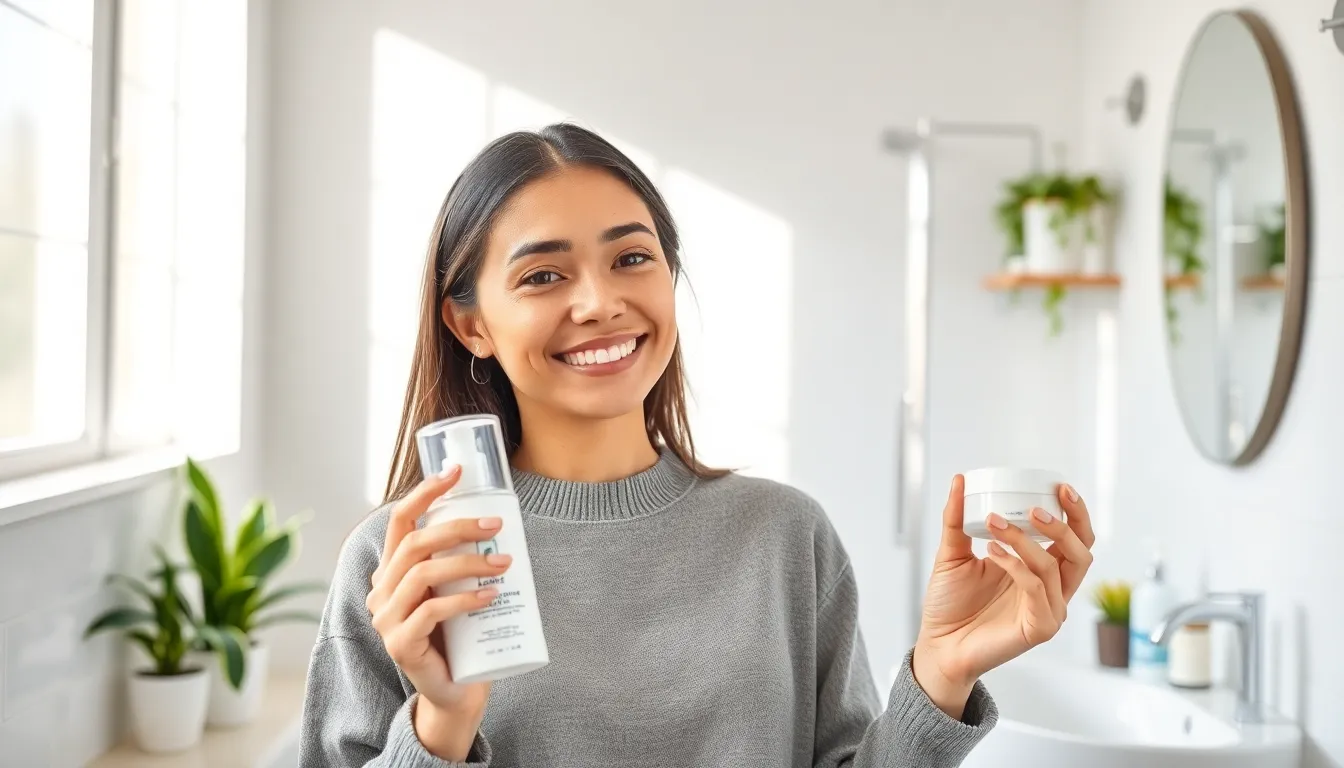
Finding the perfect cleanser forms the foundation of any effective acne skincare routine. We’ll explore the key differences between cleanser types and identify the most beneficial ingredients for managing breakouts.
Gentle Foaming Cleansers vs. Cream Cleansers
Gentle foaming cleansers offer superior oil removal capabilities that make them ideal for acne prone skin care. These formulations effectively eliminate dirt, excess sebum, and impurities without stripping away essential moisture. Oily skin types particularly benefit from foaming cleansers because they provide thorough cleansing action while maintaining the skin’s natural balance.
Cream cleansers deliver enhanced moisturizing properties that suit combination or dry acne prone skin types. While these formulations provide excellent hydration, they may not remove excess oil as effectively as foaming alternatives. Dry skin conditions often improve with cream cleansers since they prevent over-drying that can trigger compensatory oil production.
Key Ingredients to Look For in Acne Fighting Cleansers
Salicylic acid penetrates deep into pores to dissolve oil buildup and dead skin cells that cause blackheads and whiteheads. This beta hydroxy acid also reduces inflammation around existing breakouts while preventing new ones from forming. Concentrations between 0.5% and 2% provide optimal results without causing excessive irritation.
Benzoyl peroxide destroys acne causing bacteria on contact and helps dry existing pimples faster. This powerful antimicrobial ingredient comes in strengths ranging from 2.5% to 10%, though lower concentrations often prove just as effective with fewer side effects. Start with 2.5% formulations to assess your skin’s tolerance before increasing strength.
Glycolic acid accelerates cell turnover by removing the outermost layer of dead skin cells that can clog pores. Regular use of this alpha hydroxy acid helps fade acne scars while preventing future breakouts. Concentrations between 5% and 10% in cleansers provide gentle exfoliation without overwhelming sensitive skin.
Tea tree oil offers natural antibacterial properties that reduce acne severity without harsh chemical additives. Studies show that 5% tea tree oil can be as effective as benzoyl peroxide for treating mild to moderate acne. This botanical ingredient also soothes inflammation and redness associated with active breakouts.
pH balanced formulations maintain the skin’s natural acid mantle that protects against harmful bacteria and environmental damage. Look for cleansers with pH levels between 4.5 and 6.5 to support your skin’s protective barrier. Fragrance free options minimize irritation risk for sensitive acne prone skin types.
Incorporating Chemical Exfoliants Into Your Daily Routine
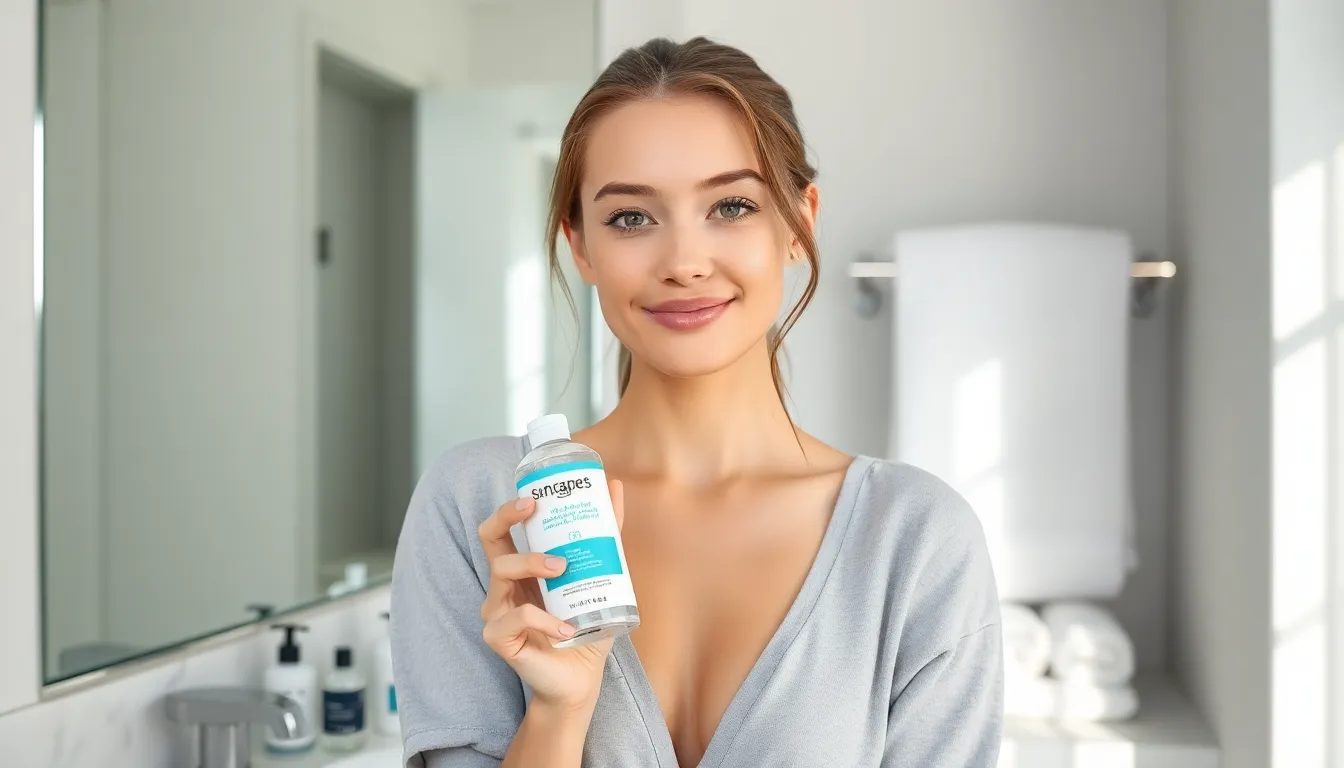
Chemical exfoliants offer a gentler yet more effective approach to removing dead skin cells compared to physical scrubs that can irritate acne-prone skin. These powerful ingredients work beneath the surface to promote cellular turnover and target the root causes of breakouts.
Benefits of Salicylic Acid for Unclogging Pores
Salicylic acid stands out as the gold standard BHA for acne-prone skin because it penetrates deep into pores to dissolve accumulated debris. This oil-soluble ingredient effectively breaks down the mixture of dead skin cells, excess sebum, and bacteria that creates blackheads and whiteheads. We recommend salicylic acid products because they reduce inflammation while simultaneously preventing new breakouts from forming.
Studies show that salicylic acid’s molecular structure allows it to work inside the pore lining, making it particularly effective for comedonal acne. The ingredient also possesses anti-inflammatory properties that help calm existing blemishes and reduce redness around active breakouts. Regular use of salicylic acid can significantly improve skin texture and minimize the appearance of enlarged pores over time.
How to Use AHA and BHA Products Safely
Starting with low concentrations between 5-7% helps your skin build tolerance without triggering irritation or excessive dryness. We suggest introducing these products gradually by using them once or twice per week initially, then slowly increasing frequency as your skin adapts. Overuse of chemical exfoliants can lead to rebound effects like increased oil production and more frequent breakouts.
Always apply chemical exfoliants to clean, dry skin and follow with a moisturizer to maintain your skin barrier. Nighttime application works best since these ingredients can increase photosensitivity and make your skin more vulnerable to UV damage. We recommend waiting at least 20-30 minutes after application before layering other skincare products to ensure optimal absorption and effectiveness.
| Exfoliant Type | Best For | Starting Frequency | Key Benefits |
|---|---|---|---|
| AHA (Glycolic Acid) | Surface texture, dullness | 1-2x per week | Brightening, hydration |
| AHA (Lactic Acid) | Sensitive skin, mild acne | 1-2x per week | Gentle exfoliation, moisture retention |
| BHA (Salicylic Acid) | Oily skin, blackheads | 2-3x per week | Pore cleansing, anti-inflammatory |
Selecting Targeted Acne Treatments and Spot Treatments
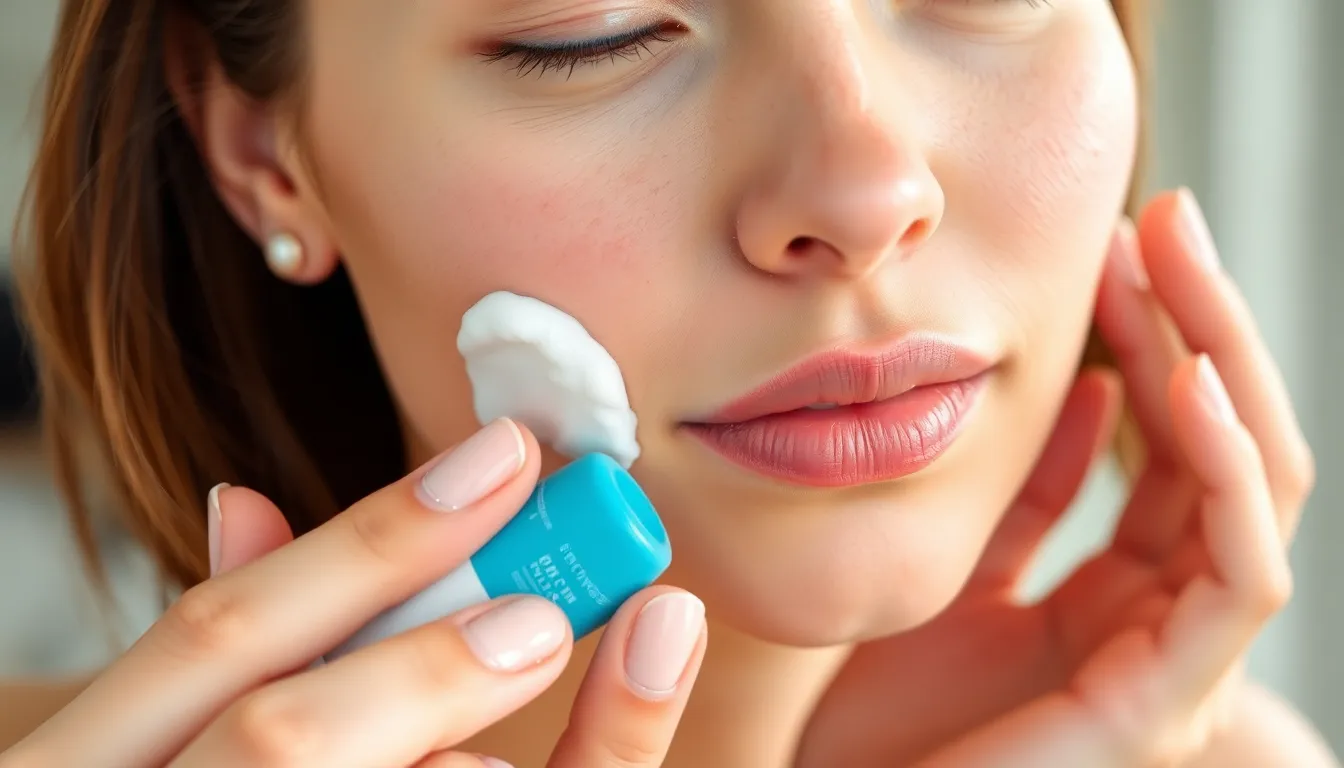
We’ve established the foundation with cleansing and exfoliation, but targeted treatments deliver the concentrated power needed to combat stubborn breakouts. These specialized products work differently from your daily routine essentials by focusing on exact acne concerns.
Over-the-Counter vs. Prescription Acne Medications
Over-the-counter answers provide accessible first-line defense against mild to moderate acne. Benzoyl peroxide and salicylic acid represent the most effective OTC options available without a prescription. These ingredients offer proven results for many people dealing with common breakouts like blackheads and whiteheads.
Prescription medications become necessary when OTC treatments fail to control moderate to severe acne. Dermatologists may prescribe retinoids or topical antibiotics for more aggressive treatment approaches. Retinoids work by increasing cell turnover and preventing clogged pores, while antibiotics target the bacteria that contribute to inflammatory acne.
Cost considerations often favor OTC products initially, but prescription treatments may prove more economical for persistent cases. We recommend starting with OTC options for 6-8 weeks before consulting a dermatologist if results remain unsatisfactory.
Severity assessment helps determine the appropriate treatment level:
| Acne Severity | Recommended Treatment | Timeline for Results |
|---|---|---|
| Mild (few blackheads/whiteheads) | OTC salicylic acid or benzoyl peroxide | 4-6 weeks |
| Moderate (multiple papules/pustules) | OTC combination or prescription retinoids | 6-12 weeks |
| Severe (nodules/cysts) | Prescription antibiotics or stronger retinoids | 12-16 weeks |
When and How to Apply Benzoyl Peroxide
Application timing matters significantly with benzoyl peroxide effectiveness. We recommend using it as a spot treatment on individual pimples rather than applying it across your entire face initially. This targeted approach minimizes irritation while maximizing results on problem areas.
Frequency guidelines suggest starting with once daily application to assess your skin’s tolerance. Most people can gradually increase to twice daily use depending on product concentration and skin sensitivity levels. Lower concentrations (2.5%) often provide similar results to higher strengths (5-10%) with less irritation.
Proper application technique involves these essential steps:
- Clean your skin thoroughly before application
- Apply a thin layer directly to affected areas
- Allow the product to absorb completely before adding other products
- Start with every other day to build tolerance
Precautions include avoiding sensitive areas around your eyes and mouth. We strongly advise starting with lower concentrations to check for irritation or allergic reactions. Benzoyl peroxide can bleach fabrics, so use white towels and pillowcases during treatment periods.
Combination strategies work well when benzoyl peroxide partners with other acne fighters. Morning application of benzoyl peroxide paired with evening salicylic acid creates a comprehensive approach without overloading your skin. Always introduce new products gradually to monitor how your skin responds to multiple active ingredients.
Finding the Perfect Moisturizer for Acne Prone Skin
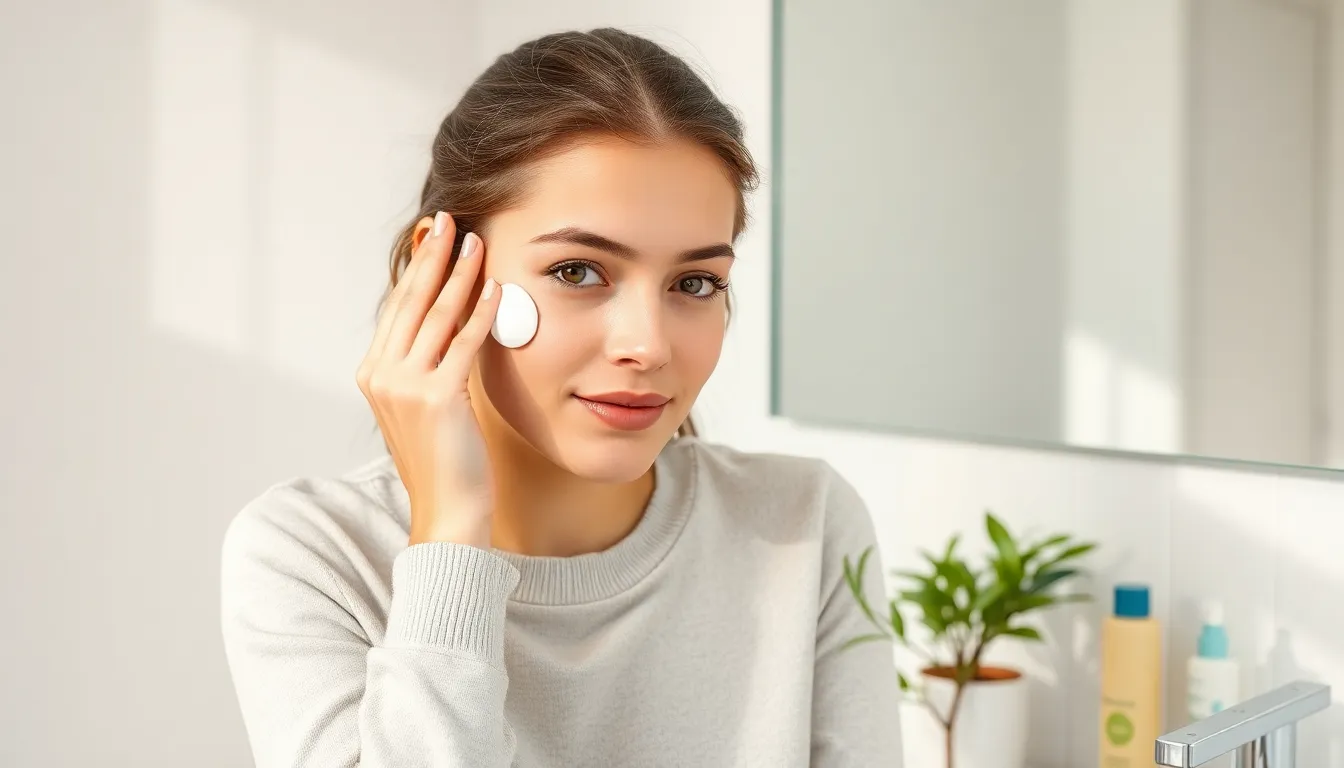
Selecting the right moisturizer represents a crucial step in maintaining healthy skin while managing acne breakouts. Many people with acne prone skin skip moisturizer entirely, fearing it’ll worsen their condition, but proper hydration actually helps regulate oil production and strengthens the skin barrier.
Non-Comedogenic Formulas That Won’t Clog Pores
Non-comedogenic products form the foundation of effective acne care because they’re specifically formulated to avoid blocking pores. These carefully tested formulations undergo rigorous evaluation to ensure they won’t contribute to blackhead or whitehead formation.
Oil-free moisturizers provide essential hydration without adding excess sebum to already oily skin. Look for lightweight gel or lotion textures that absorb quickly rather than sitting on the skin’s surface where they might trap bacteria and dead skin cells.
Key ingredients to prioritize include hyaluronic acid and ceramides, which restore the skin barrier without clogging pores. Hyaluronic acid draws moisture from the environment while ceramides repair and strengthen the protective barrier that keeps irritants out and moisture in.
Avoid heavy creams and products containing comedogenic ingredients like coconut oil, cocoa butter, or lanolin. These ingredients may feel luxurious but can trap oil and bacteria in pores, leading to new breakouts even when you’re following your acne treatment routine consistently.
Balancing Hydration Without Triggering Breakouts
Timing matters when applying moisturizer to acne prone skin. We recommend using a daytime moisturizer with SPF to protect against UV damage that can worsen acne scarring, while nighttime moisturizers should focus purely on hydration and barrier repair.
Application technique plays a vital role in preventing breakouts. Use gentle upward motions and avoid over-moisturizing, as too much product can overwhelm pores and create an environment where acne causing bacteria thrive.
Ingredient combinations work best when they complement your existing acne treatments. Niacinamide soothes inflammation and strengthens the skin barrier, making it an ideal companion to salicylic acid or benzoyl peroxide treatments without causing irritation.
Monitor your skin’s response for the first few weeks after introducing a new moisturizer. Start with small amounts and gradually increase usage as your skin adjusts, watching for any signs of increased breakouts or irritation that might indicate the formula isn’t suitable for your exact skin needs.
Consistency in your moisturizing routine helps maintain the delicate balance between hydration and oil control. Skip moisturizer sporadically and your skin may overcompensate by producing excess oil, potentially triggering the very breakouts you’re trying to prevent.
Building Your Morning Acne Prone Skin Care Skincare Routine
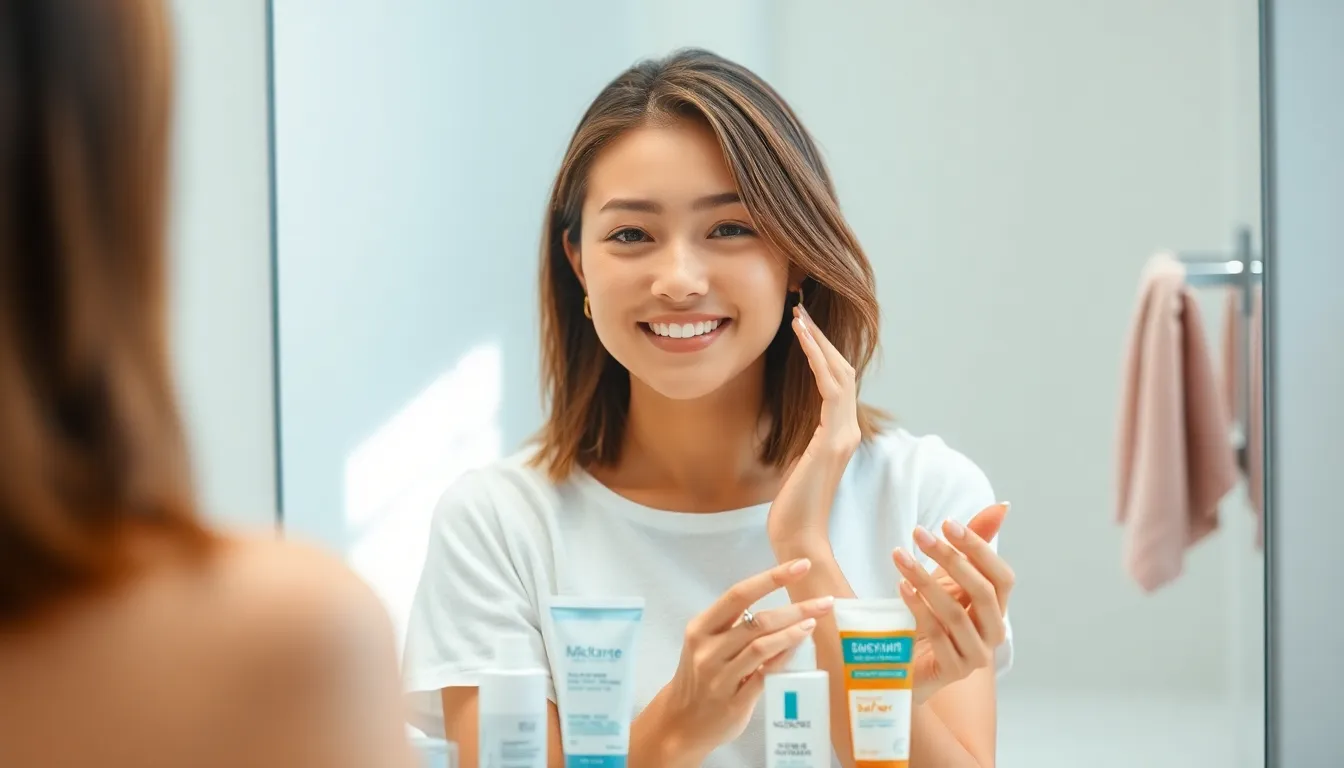
Creating a consistent morning routine sets the foundation for managing acne prone skin throughout the day. Our carefully structured approach targets breakouts while maintaining your skin’s natural protective barrier.
Step-by-Step AM Routine for Clear Skin
Gently cleanse your face with a mild cleanser formulated specifically for acne prone skin types. This initial step removes overnight buildup of oils and impurities without disrupting your skin’s natural moisture balance.
Apply a toner or astringent as an optional second step to help balance your skin’s pH levels. We recommend choosing toners specifically designed for acne prone skin to effectively remove excess oil while preparing your skin for subsequent treatments.
Apply an acne treatment containing active ingredients like salicylic acid or benzoyl peroxide to target problem areas. These powerful compounds work by reducing inflammation and preventing future breakouts before they can develop into more serious blemishes.
Moisturize with a lightweight formula using an oil free moisturizer that won’t clog your pores. This crucial step maintains proper hydration levels while supporting your skin’s barrier function throughout the day.
Essential Sun Protection for Acne Prone Skin
Use a broad spectrum sunscreen with at least SPF 30 to shield your skin from harmful UV rays that can worsen acne scarring and increase inflammation. We emphasize selecting sunscreens labeled as “non comedogenic” or “oil free” to prevent pore blockage while maintaining effective protection.
Following this structured morning routine helps control acne development while promoting clearer skin over time. Remember that gentle treatment prevents irritation and supports your skin’s natural healing processes.
Creating Your Evening Acne Prone Skin Care Skincare Routine

Evening routines provide the perfect opportunity to repair and treat acne prone skin while you sleep. We’ll guide you through a comprehensive nighttime approach that maximizes healing potential.
Nighttime Steps for Maximum Acne Fighting Power
Double cleansing removes the day’s buildup and serves as the foundation of effective acne treatment. Start with an oil based cleanser or cleansing balm to dissolve makeup, sunscreen, and excess sebum. Massage the cleanser for 2-3 minutes to ensure thorough removal of impurities, then rinse with warm water using a clean flannel. Follow up with a foaming cleanser to eliminate any remaining residue and provide deep pore cleansing.
Toning balances your skin’s pH levels after cleansing and prepares it for active ingredients. Apply a gentle toner formulated specifically for acne prone skin using cotton pads or gentle patting motions. Skip this step if your skin feels tight or irritated, as some people find toning unnecessary in their routine.
Medicated treatments deliver targeted acne fighting power during your skin’s natural repair cycle. Apply retinoids like retinol, adapalene, or tretinoin to clean, dry skin for maximum absorption. These ingredients control acne formation while reducing fine lines and brightening overall skin tone. Wait 10-15 minutes between cleansing and applying retinoids to prevent irritation.
Moisturizing locks in hydration and strengthens your skin barrier against environmental damage. Choose an emollient moisturizer that provides deep hydration without clogging pores. This step becomes crucial when using active treatments, as it prevents dryness and irritation that can worsen acne conditions.
Eye care addresses delicate under eye concerns that standard face products can’t treat effectively. Apply a hydrating eye cream containing retinol to target dark circles and prevent fine lines. You can also sandwich a retinoid between your regular eye cream and night moisturizer for enhanced anti aging benefits.
How to Layer Active Ingredients Effectively
Proper layering order ensures maximum product absorption and prevents ingredient conflicts. Follow this sequence: cleanser, toner, active ingredients like retinoids, then moisturizer. This progression allows each product to penetrate effectively without creating barriers or reducing efficacy.
Starting slowly prevents irritation when introducing new active ingredients to your routine. Begin with lower concentration retinoids and use them every other night initially. Gradually increase frequency as your skin builds tolerance, typically over 2-4 weeks.
Consistency delivers optimal results for acne prone skin improvement. Stick to your evening routine daily rather than using products sporadically. Regular use of active ingredients provides cumulative benefits and helps maintain clear skin over time.
Avoiding Common Skincare Mistakes That Worsen Acne
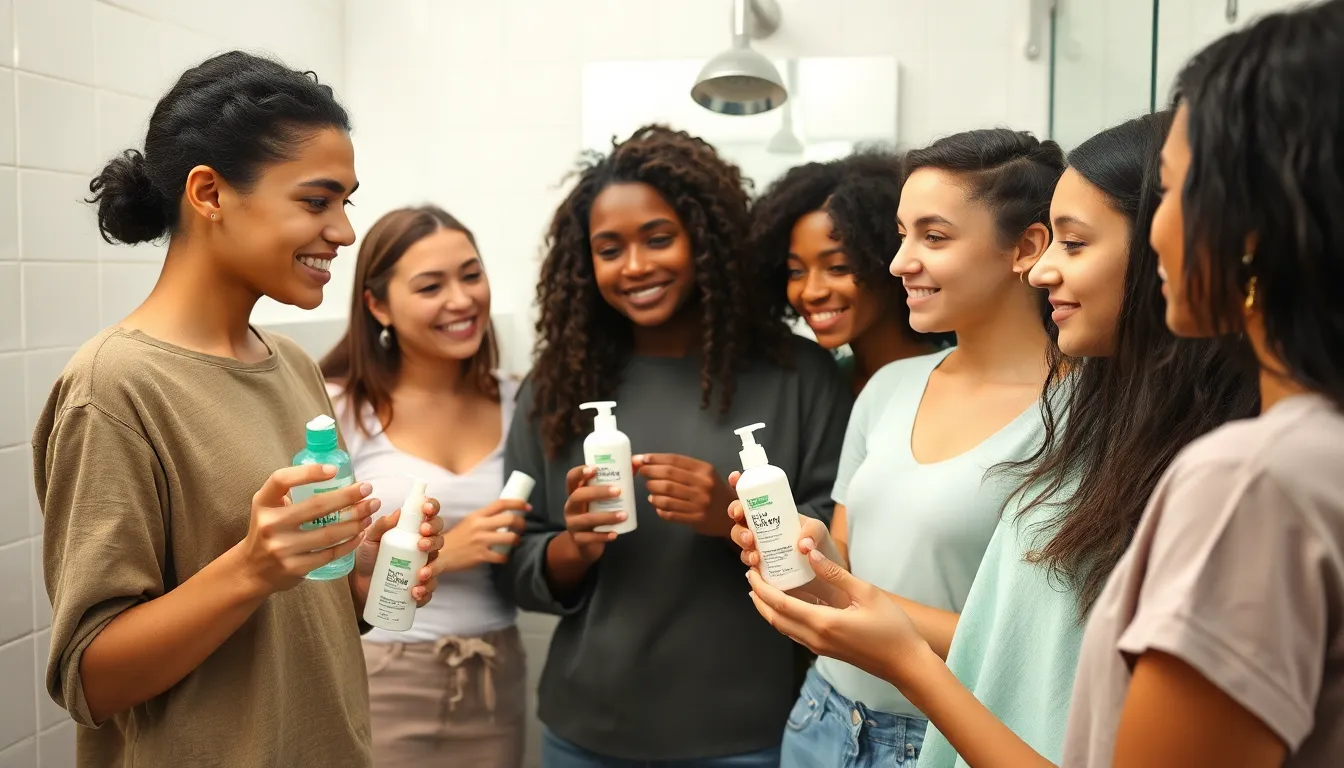
Even with the best intentions, many of us inadvertently make mistakes that can sabotage our acne-fighting efforts. Understanding these common pitfalls helps us avoid setbacks and maintain healthier, clearer skin.
Over-Cleansing and Its Negative Effects
Washing your face too frequently strips away natural oils that protect your skin barrier. When we over-cleanse, our skin responds by producing even more oil to compensate for what’s been removed. This rebound effect creates a frustrating cycle where increased oil production leads to more breakouts.
Harsh cleansers disrupt the skin’s natural pH balance and protective barrier. Our skin becomes more susceptible to irritation, dryness, and sensitivity when we use aggressive products multiple times daily. Research shows that over-cleansing can actually increase inflammation and make acne worse rather than better.
Twice daily cleansing with a gentle, pH-balanced cleanser provides optimal results. Morning and evening cleansing sessions effectively remove impurities without compromising our skin’s natural defenses. Limiting cleansing frequency allows our skin barrier to maintain its protective function while still addressing acne concerns.
Products and Ingredients That Can Trigger Breakouts
Heavy oils and emollients rank among the most problematic ingredients for acne-prone skin. Products containing mineral oil, lanolin, or cocoa butter can clog pores and create an environment where acne-causing bacteria thrive. We should always check ingredient lists before incorporating new products into our routine.
Fragrances and alcohol-based formulations frequently irritate sensitive, acne-prone skin. These ingredients can cause inflammation and disruption to our skin barrier, making breakouts more likely to occur. Opting for fragrance-free, alcohol-free alternatives reduces the risk of irritation and sensitivity reactions.
Non-comedogenic labeling serves as our best guide for product selection. Products without this designation haven’t been tested to ensure they won’t clog pores. We increase our risk of developing blackheads and whiteheads when we use comedogenic products that block our pores with excess oil and dead skin cells.
| Ingredient Category | Examples | Risk Level |
|---|---|---|
| Heavy Oils | Mineral oil, lanolin, cocoa butter | High |
| Irritating Additives | Fragrances, denatured alcohol | Medium-High |
| Comedogenic Agents | Isopropyl myristate, sodium lauryl sulfate | Medium |
Tracking Your Progress and Adjusting Your Routine
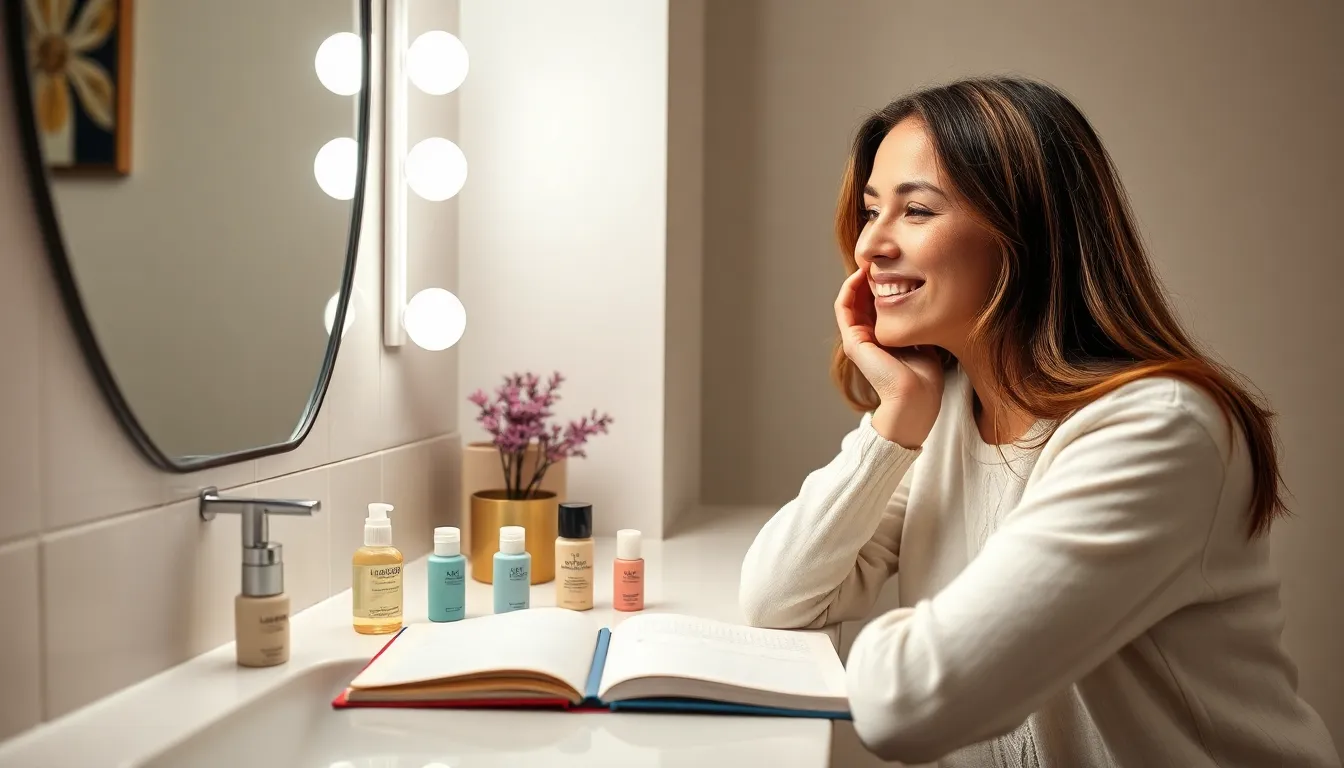
Successful acne management requires consistent monitoring and strategic adjustments to your skincare routine. We’ll explore how to track changes effectively and determine when modifications are necessary for optimal results.
Documenting Skin Changes and Improvements
Keep a detailed daily or weekly log of your skin’s appearance and any reactions to products. Documentation helps us identify patterns and track progress over time, making it easier to spot improvements or concerning changes.
Take regular photographs in consistent lighting conditions to capture visible changes that might be difficult to notice day by day. We recommend using the same location, time of day, and lighting setup for accurate comparisons.
Record the introduction of new products and document any changes in acne severity, redness, or dryness that follow. This symptom log becomes invaluable when determining which products work best for your skin type.
Note improvements in existing breakouts and track the appearance of new blemishes to understand your skin’s response patterns. We should also document any signs of irritation or unexpected reactions that occur during treatment.
Monitor your skin’s texture and overall appearance beyond just counting breakouts, as healthy skin involves multiple factors including hydration levels and barrier function. This comprehensive approach helps us understand the full impact of our skincare routine.
When to Modify Your Acne Prone Skin Care Skincare Routine
Persistent irritation, redness, or dryness signals the need to reduce product frequency or discontinue use entirely. We should consult a healthcare provider if these symptoms continue even though adjusting our routine.
Lack of improvement after 6 to 8 weeks indicates it’s time to consider adjusting your routine or replacing products under professional guidance. Dermatologists can provide valuable insights when our current approach isn’t delivering expected results.
New breakouts or allergic reactions require immediate discontinuation of suspected products and professional consultation. We must prioritize skin safety over potential benefits when adverse reactions occur.
Seasonal changes or hormonal fluctuations may necessitate routine modifications to address shifting skin needs. Our skin’s requirements can change based on environmental factors and internal hormonal cycles.
Successful treatment of initial concerns might allow us to reduce the frequency of certain active ingredients or introduce new products for additional benefits. We should maintain effective treatments while carefully adding complementary products as needed.
Seeking Professional Help When Home Remedies Aren’t Enough
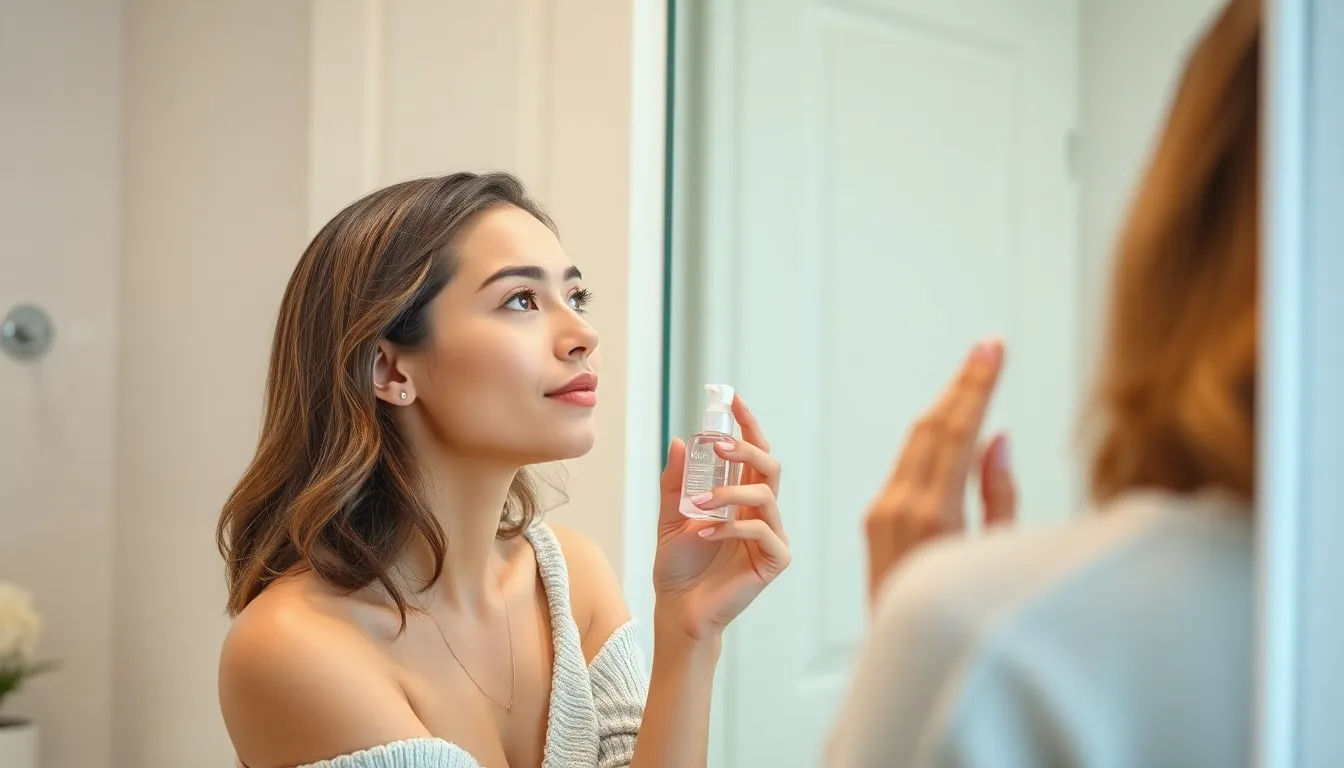
Sometimes our best skincare efforts need professional reinforcement to achieve the clear skin we’re working toward.
Signs It’s Time to See a Dermatologist
Persistent breakouts even though consistent skincare routines signal it’s time for expert intervention. We often see this when gentle cleansers like Cetaphil Gentle Skin Cleanser and targeted treatments with salicylic acid or benzoyl peroxide aren’t delivering the results we need after 8-12 weeks of dedicated use.
Severe acne conditions that leave scars or cause important emotional distress require professional attention beyond what over-the-counter products can provide. Nodular and cystic acne particularly need dermatological expertise since these deep, painful breakouts can permanently damage skin tissue if left untreated.
Accompanying skin concerns like excessive redness, unusual pigmentation changes, or other dermatological conditions often develop alongside persistent acne. These complex cases benefit from professional diagnosis to address multiple skin issues simultaneously.
Worsening symptoms after trying multiple skincare approaches indicate we might be dealing with underlying factors that require prescription intervention. Hormonal fluctuations, medication side effects, or underlying health conditions can contribute to stubborn acne that doesn’t respond to conventional treatments.
Professional Treatments That Complement Your Skincare Routine
Prescription medications offer targeted answers that work alongside our existing routines with gentle cleansers and non-comedogenic moisturizers like CeraVe AM or PM Facial Moisturizing Lotion. Oral antibiotics help reduce inflammation and bacterial growth from within, while prescription retinoids like adapalene provide stronger cell turnover than over-the-counter alternatives.
Blue light therapy specifically targets the bacteria that cause acne breakouts without disrupting our established skincare practices. This treatment works by destroying P. acnes bacteria through targeted wavelengths, allowing our regular cleansing and moisturizing routine to maintain clearer skin between sessions.
Chemical peels performed by professionals provide deeper exfoliation than our daily BHA and AHA products. These treatments unclog pores more thoroughly and can address post-acne scarring while working in harmony with our gentler at-home chemical exfoliants.
| Treatment Type | How It Complements Home Care | Frequency |
|---|---|---|
| Prescription Retinoids | Enhances cell turnover beyond OTC options | Daily (evening) |
| Blue Light Therapy | Targets bacteria while maintaining routine | 2-3 sessions per week |
| Professional Chemical Peels | Provides deeper exfoliation than home products | Monthly or bi-monthly |
| Oral Antibiotics | Reduces inflammation alongside topical care | As prescribed |
Injectable treatments for severe cystic acne provide immediate relief while our regular skincare routine prevents new breakouts. These cortisone injections quickly reduce inflammation in deep nodules, allowing our daily treatments with benzoyl peroxide or salicylic acid to work more effectively on surface-level concerns.
Conclusion
Creating an effective skincare routine for acne-prone skin doesn’t have to be overwhelming. We’ve covered the essential steps that’ll help you build a foundation for clearer healthier skin—from choosing the right cleanser to incorporating targeted treatments and maintaining consistency.
Remember that patience is key when managing acne. Your skin needs time to adjust to new products and show real improvement. We recommend giving any new routine at least 6-8 weeks before making major changes.
The journey to clearer skin is personal and what works for others might not work for you. By understanding your skin’s unique needs avoiding common mistakes and knowing when to seek professional help you’re already on the right path to achieving the results you want.
Start with the basics stay consistent and trust the process—your skin will thank you for it.
Frequently Asked Questions
What causes acne-prone skin?
Acne-prone skin is triggered by multiple factors including hormonal fluctuations, dietary choices, environmental pollutants, and certain skincare ingredients. Stress and sleep deprivation can worsen breakouts by increasing oil production and disrupting hormone regulation. Understanding these triggers helps you make better skincare choices and lifestyle adjustments to minimize breakouts.
What’s the difference between gentle foaming and cream cleansers for acne?
Gentle foaming cleansers are ideal for oily, acne-prone skin because they effectively remove excess oil and impurities without stripping the skin. Cream cleansers work better for combination or dry skin types as they provide additional hydration while cleansing. Choose based on your skin’s oil production and moisture needs.
Which ingredients should I look for in acne-fighting cleansers?
Key acne-fighting ingredients include salicylic acid for deep pore cleansing, benzoyl peroxide for targeting bacteria, glycolic acid for cell turnover, and tea tree oil for natural antibacterial properties. Look for pH-balanced, fragrance-free formulations to maintain your skin’s protective barrier and minimize irritation.
Are chemical exfoliants better than physical scrubs for acne?
Yes, chemical exfoliants are gentler and more effective than physical scrubs for acne-prone skin. Salicylic acid (BHA) penetrates pores to remove dead skin cells and reduce inflammation, while AHAs promote cell turnover. Start with low concentrations and use at night to build tolerance and avoid photosensitivity.
When should I use over-the-counter vs. prescription acne treatments?
Over-the-counter treatments containing benzoyl peroxide or salicylic acid work well for mild to moderate acne. Prescription medications become necessary for severe, persistent acne that doesn’t respond to OTC options, deep cystic breakouts, or when scarring occurs. Consult a dermatologist to assess your acne severity.
Do I really need moisturizer if I have acne-prone skin?
Absolutely. Moisturizing helps regulate oil production and strengthens your skin barrier. Choose lightweight, oil-free, non-comedogenic formulas with ingredients like hyaluronic acid and ceramides. Skipping moisturizer can actually increase oil production as your skin tries to compensate for dehydration, potentially worsening breakouts.
What should my morning skincare routine include?
Your morning routine should include gentle cleansing, pH-balancing toner, targeted acne treatments, oil-free moisturizer, and broad-spectrum sunscreen. This sequence controls acne development while protecting against UV rays that can worsen scarring and inflammation. Keep it simple and consistent for best results.
Why is double cleansing important for acne-prone skin?
Double cleansing ensures complete removal of impurities, makeup, and excess oil that can clog pores. Start with an oil-based cleanser to dissolve makeup and sebum, followed by a foaming cleanser to remove remaining debris. This prepares your skin to better absorb acne treatments applied afterward.
What common mistakes worsen acne?
Over-cleansing strips natural oils and increases oil production, while harsh cleansers disrupt pH balance. Using products with heavy oils, fragrances, or alcohol can trigger breakouts. Avoid comedogenic ingredients and stick to twice-daily cleansing with gentle, pH-balanced products to prevent irritation and worsening acne.
When should I see a dermatologist for my acne?
Seek professional help if breakouts persist despite consistent skincare efforts, if you have severe cystic acne, or if scarring occurs. Dermatologists can prescribe stronger medications, perform professional treatments like chemical peels or blue light therapy, and provide injectable treatments for severe cases that complement your at-home routine.






